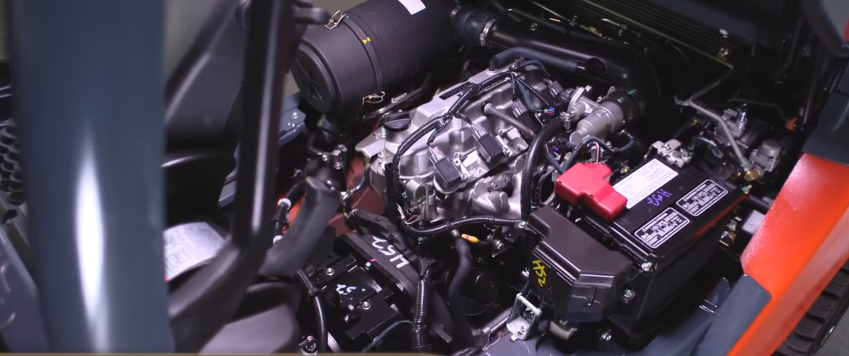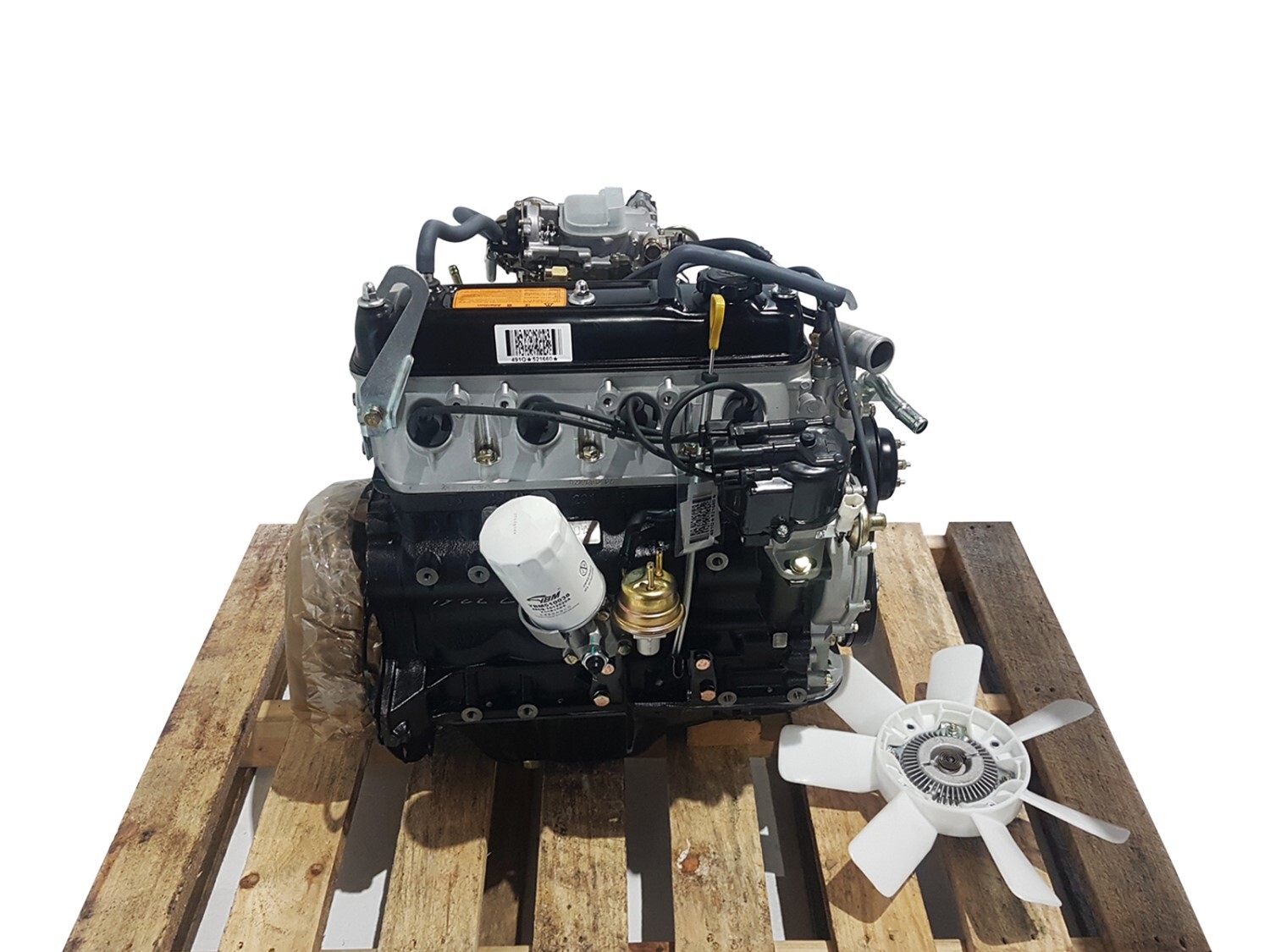Why the 4Y Engine Is Still Popular in Classic and Modern Vehicles
Why the Engine Is the most effective Selection for Performance and Performance in Your Cars And Truck
The engine stays a pivotal element in automotive style, primarily as a result of its considerable influence on both performance and performance. As developments in modern technology allow smaller sized engines to deliver exceptional power while enhancing gas economy, the combination of attributes such as turbocharging and hybrid systems ends up being significantly important. These advancements not just boost driving experience yet additionally address ecological issues. Nonetheless, the question emerges: just how do these elements integrate to redefine our understanding of automotive performance? Exploring this balance exposes much deeper understandings right into the future of engine design.
Comprehending Engine Kind
Understanding the different kinds of engines is vital for enhancing efficiency and effectiveness in vehicle style. The main engine types include internal burning engines (ICE), electrical engines, and crossbreed systems, each offering unique advantages and constraints.
Inner combustion engines, which can be more classified right into gasoline and diesel variants, depend on the burning of gas to produce power. Fuel engines typically give greater RPMs and much better acceleration, while diesel motor are recognized for their torque and fuel efficiency, making them suitable for heavy-duty applications.
Electric engines, on the various other hand, utilize electrical motors powered by batteries or gas cells. They provide instantaneous torque distribution, leading to smooth acceleration and reduced discharges. The efficiency of electrical engines is substantially more than that of ICEs, making them a preferred option for eco-conscious customers.
Crossbreed systems combine both inner combustion and electrical engines, leveraging the staminas of both modern technologies. They enhance gas usage by using electrical power at lower speeds and switching to gasoline or diesel for greater speeds or larger loads.
Picking the right engine kind is important for attaining desired performance metrics and ecological sustainability in contemporary automotive engineering.
The Influence of Engine Size
Engine size often plays a crucial duty in determining a car's efficiency and performance. Usually measured in liters or cubic centimeters, engine size directly influences the power output and torque qualities of an automobile.
Nevertheless, boosted engine dimension usually associates with lessened gas performance. Bigger engines eat even more gas, bring about greater exhausts and functional prices. Subsequently, suppliers have to stabilize the demand for power with the need for gas economy. Smaller sized engines can provide sufficient performance for everyday driving while advertising far better performance, making them a prominent option in mid-size and compact automobiles.
Additionally, innovations in engine layout, such as turbocharging and direct gas injection, allow smaller sized engines to achieve power degrees similar to their bigger equivalents. This trend stresses the significance of not solely concentrating on engine size yet also taking into consideration general vehicle style and modern technology (4y engine). Inevitably, the influence of engine size on efficiency and efficiency emphasizes the need for customers to evaluate their details driving requirements and choices when picking a car
Advanced Engine Technologies
Technologies in engine technologies have actually dramatically reshaped the landscape of automobile efficiency and performance, building upon the foundational ideas developed by engine dimension. Especially, developments such as turbocharging and straight fuel injection have allowed smaller sized engines to supply power levels previously related to bigger counterparts. Turbochargers press air getting in the engine, permitting for increased power output without a matching boost in engine dimension, while straight shot enhances fuel delivery, improving combustion effectiveness.
Furthermore, variable valve timing systems have emerged as an important modern technology, permitting engines to change valve procedure based upon driving problems. This adaptability improves both efficiency throughout velocity and gas effectiveness during cruising. Hybrid and electric engine technologies further illustrate the change in auto layout, combining traditional internal burning engines with electrical motors to maximize efficiency while reducing discharges.
Additionally, developments in materials science have brought about lighter, extra long lasting engine elements, further boosting efficiency and durability. The integration of innovative electronics and engine control systems also permits real-time changes, guaranteeing optimal efficiency across numerous conditions. Collectively, these innovative engine modern technologies not just improve lorry efficiency but additionally contribute to an extra sustainable auto future, showing the ongoing advancement of engine design.
Balancing Power and Efficiency
Striking an equilibrium between power and effectiveness is important in modern-day automobile layout as makers seek to fulfill progressively rigorous discharges laws while satisfying customer demand for performance (4y engine). The obstacle depends on optimizing engine attributes to deliver robust power result without sacrificing fuel economic situation
To achieve this balance, designers employ different strategies, such as turbocharging, which improves engine power by compeling in more air, enabling a smaller sized engine displacement that improves gas performance. Variable valve timing innovations likewise play a significant function, making it possible for engines to readjust their performance qualities based upon driving problems, therefore enhancing both power and efficiency.
Moreover, innovations in materials and producing strategies have actually brought about lighter engine components, which decrease general automobile weight and enhance gas performance without endangering power. Hybrid technologies have likewise become a feasible option, integrating standard inner burning engines with electrical powertrains to supply a boost in performance while preserving lower discharges.

Future Fads in Engine Style

Moreover, the growth of sophisticated products, such as high-strength alloys and light-weight composites, is readied to revolutionize engine parts. These products not just lower weight but additionally enhance thermal effectiveness, therefore optimizing efficiency. In addition, producers are discovering variable compression proportions, enabling engines to adjust to various driving conditions, enhancing both power result and fuel economic situation.
Further, the increase of expert system and device understanding in engine design is making it possible for anticipating maintenance and real-time efficiency optimization. This modern technology can result in engines that self-adjust for maximum performance based on driving patterns.

Conclusion
In verdict, the engine offers as a crucial element in achieving optimum look at this web-site efficiency and effectiveness in modern-day automobiles. The interplay in between engine size and layout proceeds to progress, driving innovations that balance thrilling efficiency with ecological sustainability.
Furthermore, innovations in engine style, such as turbocharging and straight fuel injection, permit smaller engines to achieve power levels comparable to their bigger counterparts.Developments in engine technologies have actually significantly improved the landscape of automobile efficiency and effectiveness, structure upon the foundational ideas established by engine size. Turbochargers compress air going into the engine, permitting for increased power outcome without YOURURL.com a matching rise in engine dimension, while straight injection maximizes gas distribution, boosting combustion effectiveness.
Crossbreed and electrical engine technologies even more highlight the shift in automotive layout, integrating traditional internal burning engines with electric motors to optimize efficiency while reducing emissions.
Collectively, these sophisticated engine technologies not only enhance lorry efficiency but additionally contribute to a much more lasting automobile future, showing the recurring evolution of engine design. (4y engine)